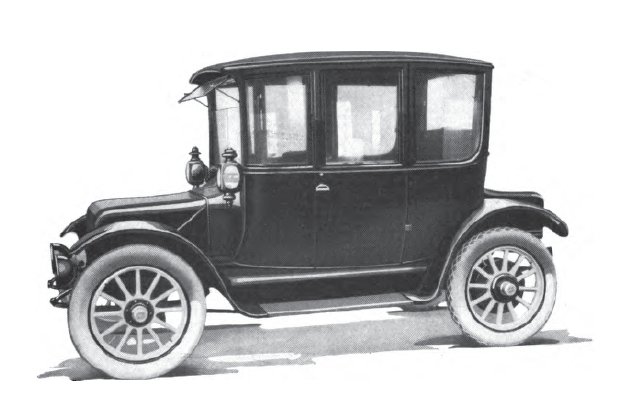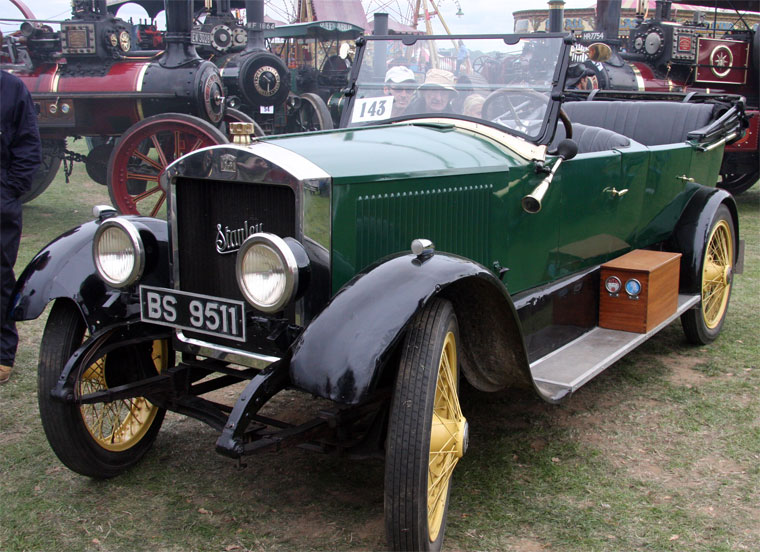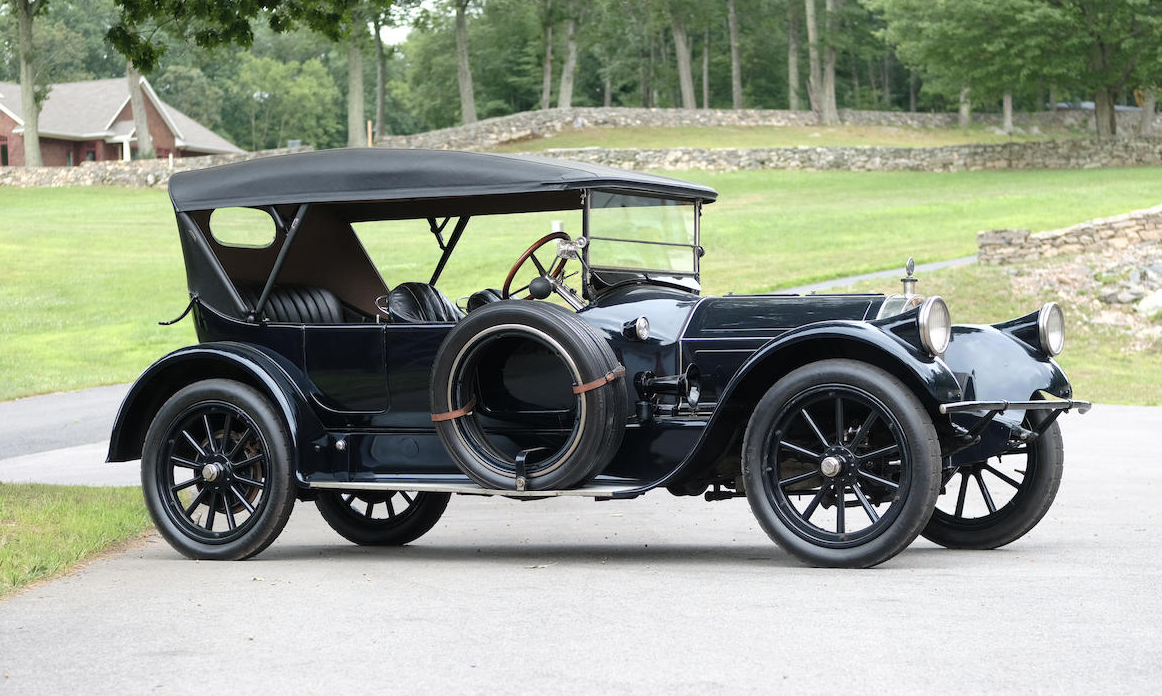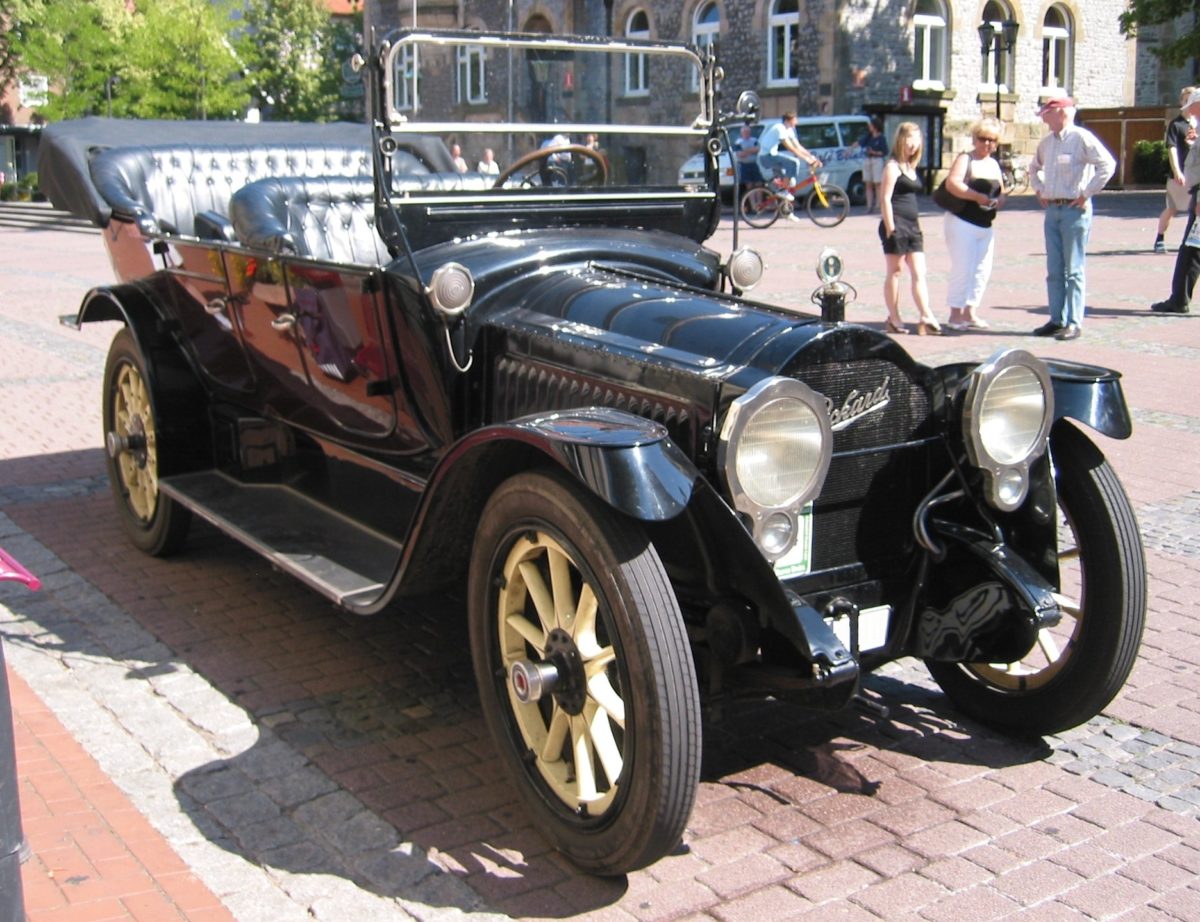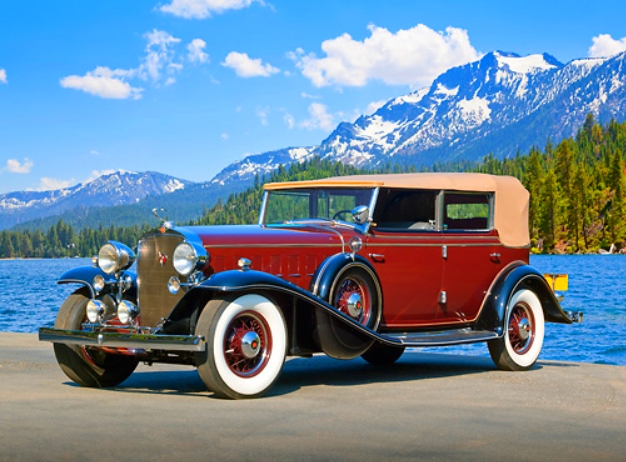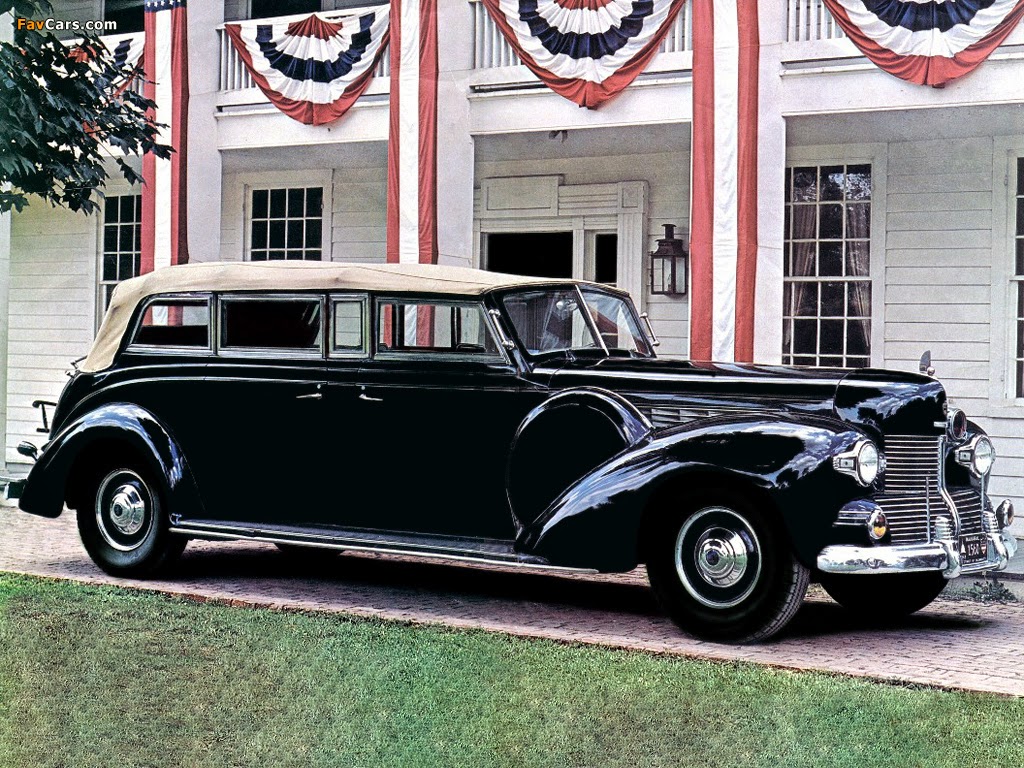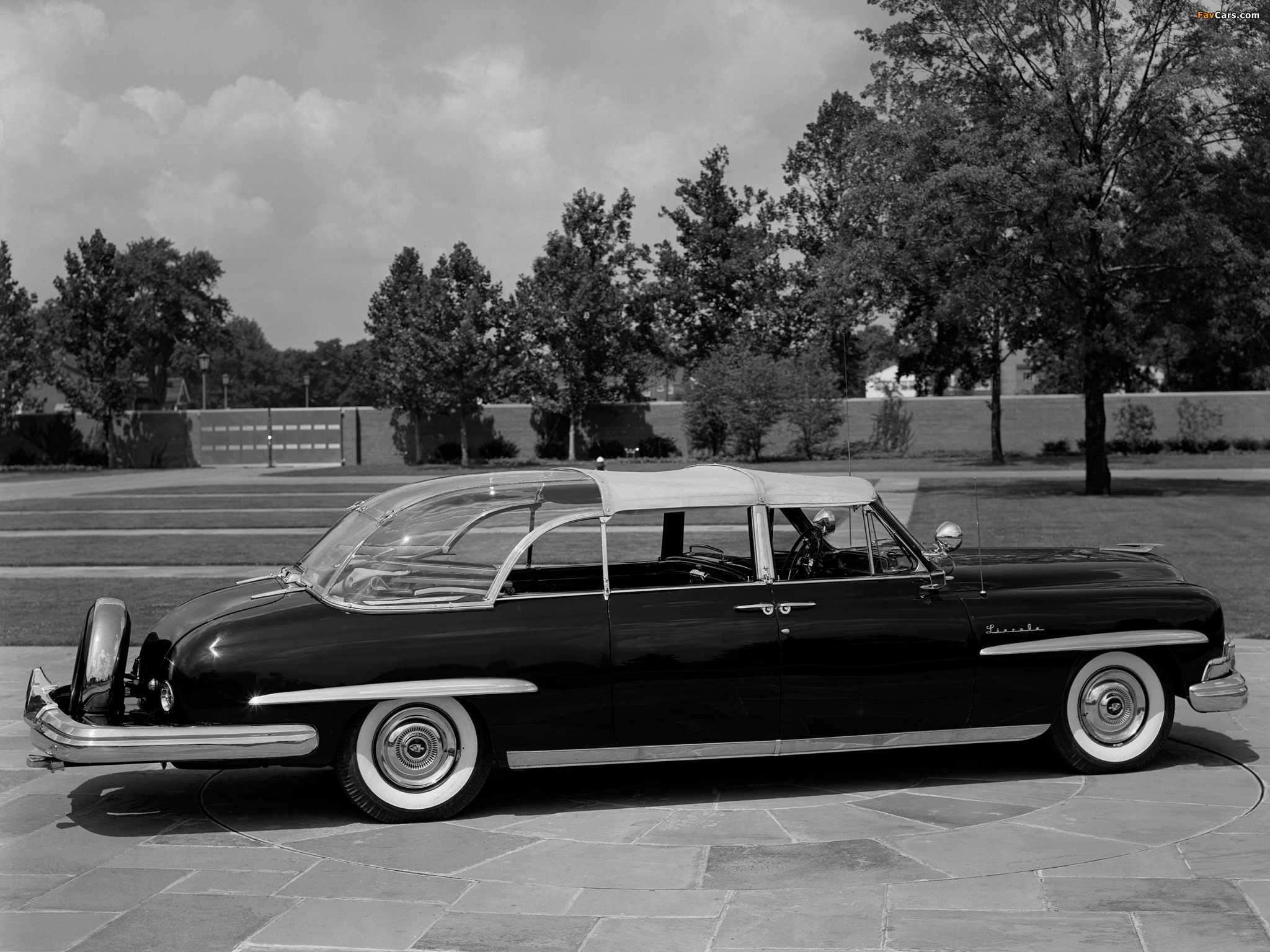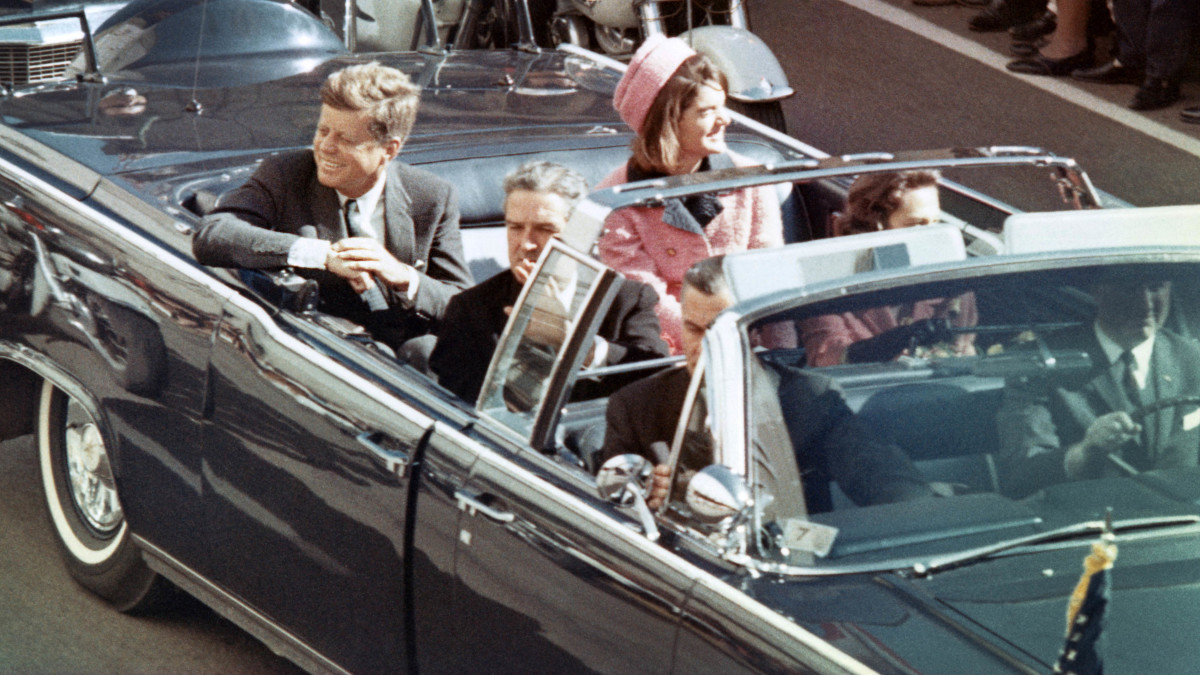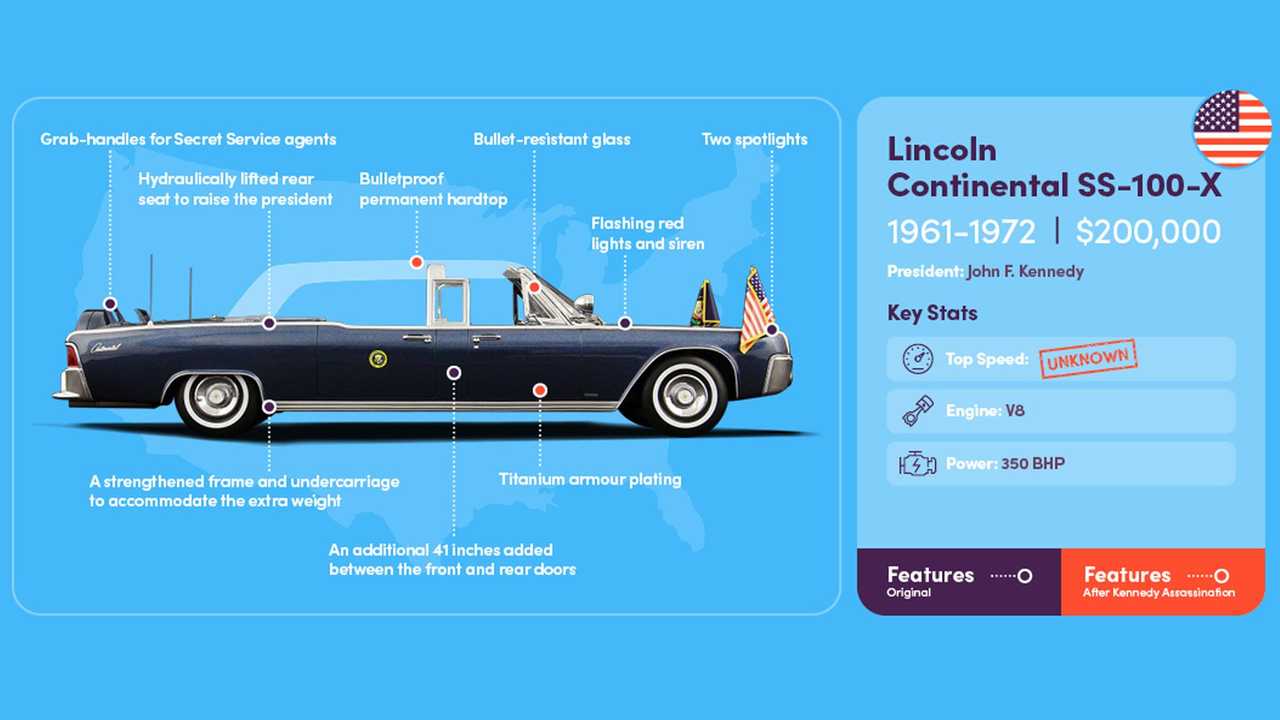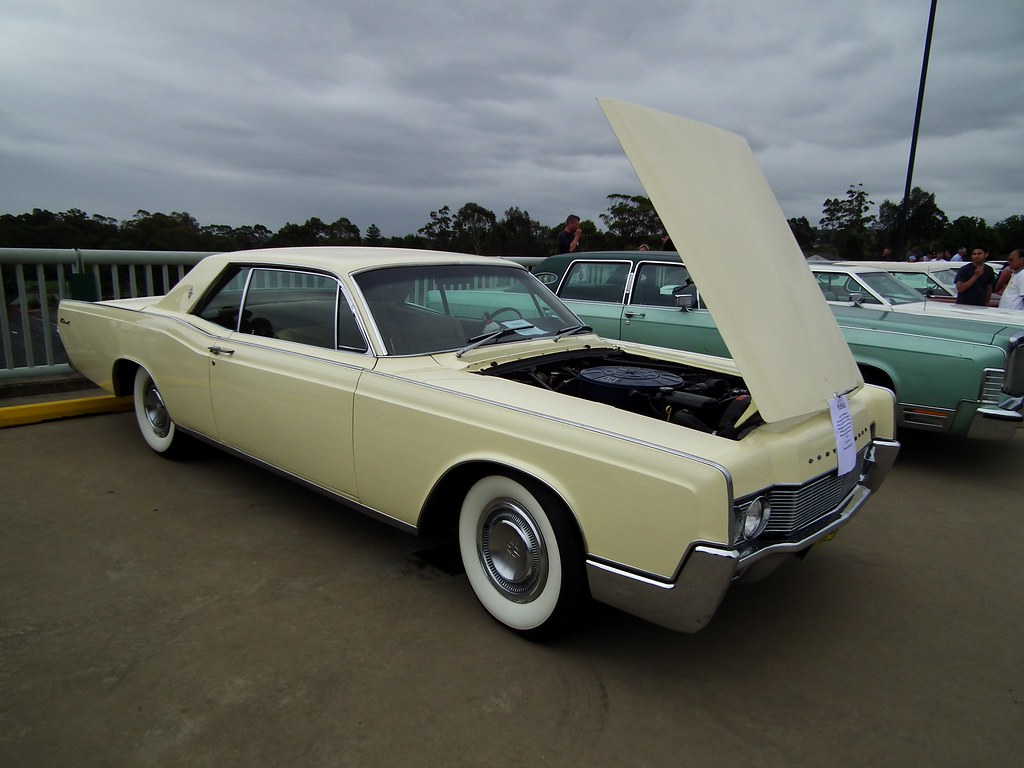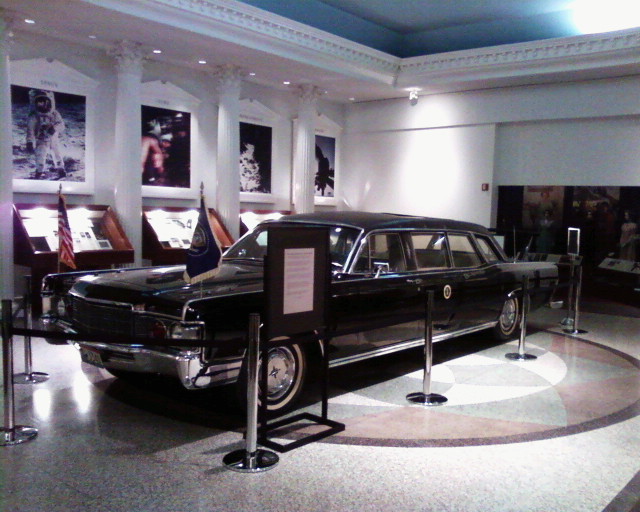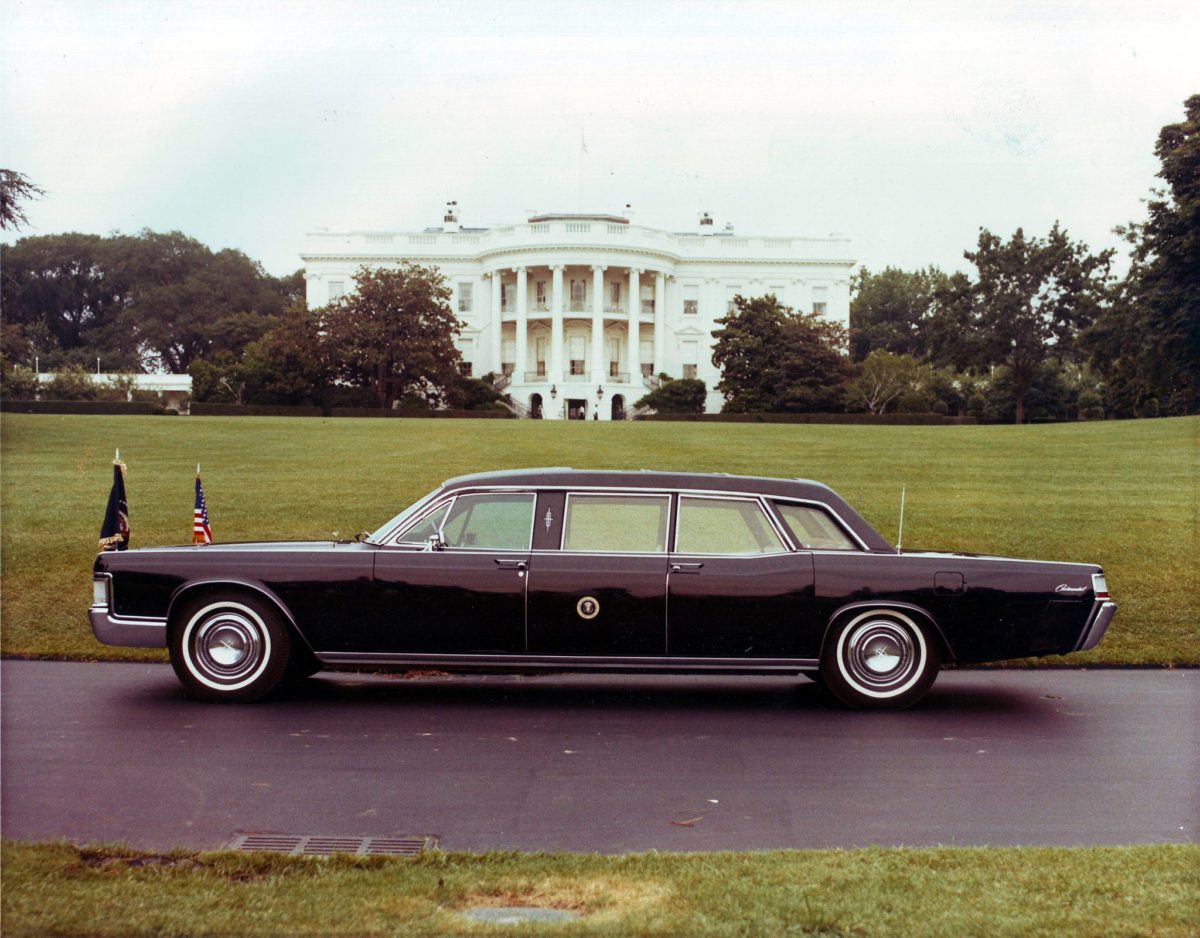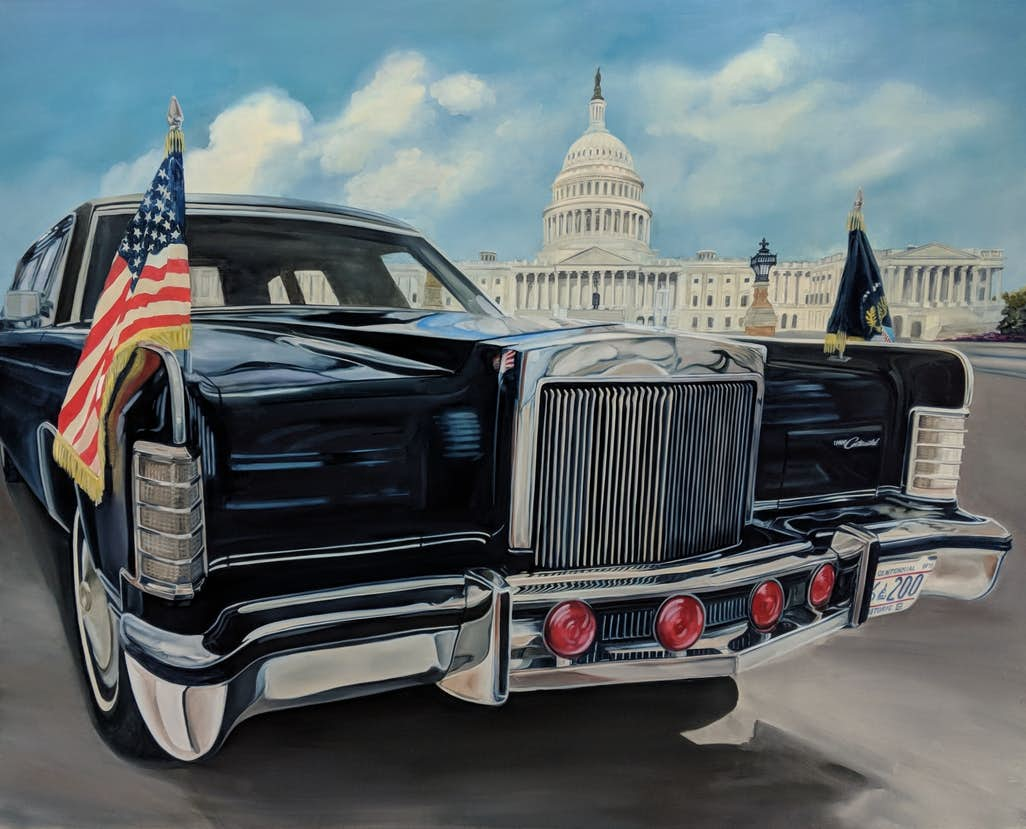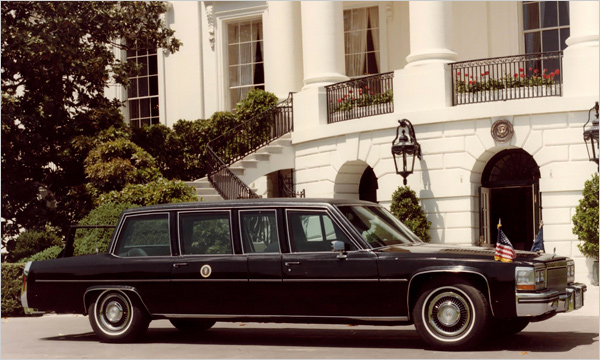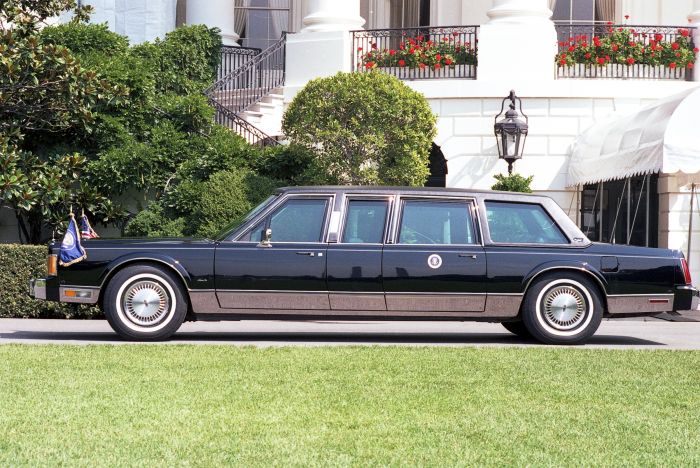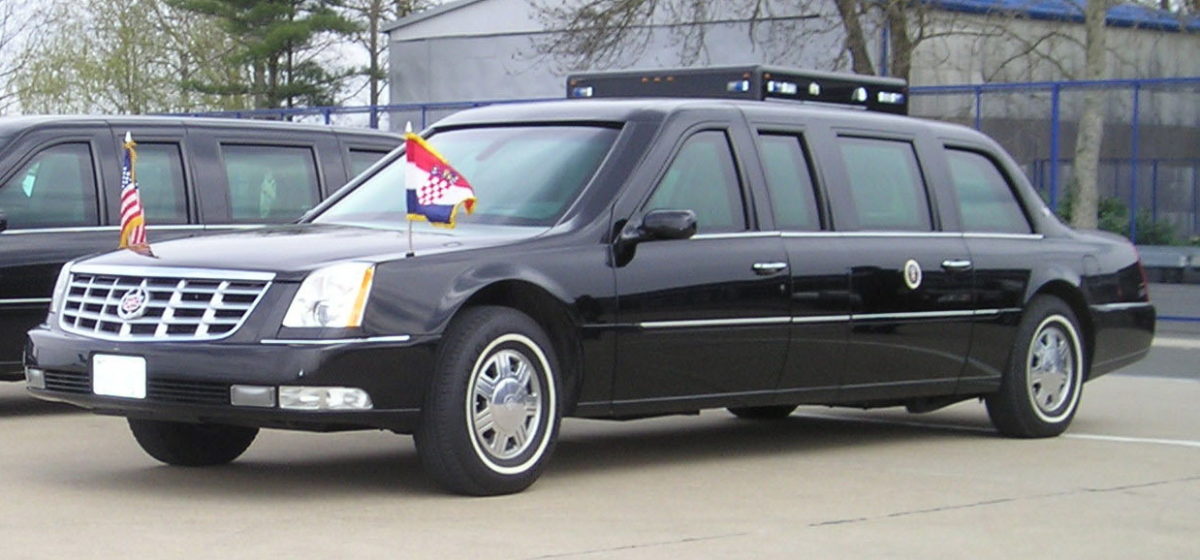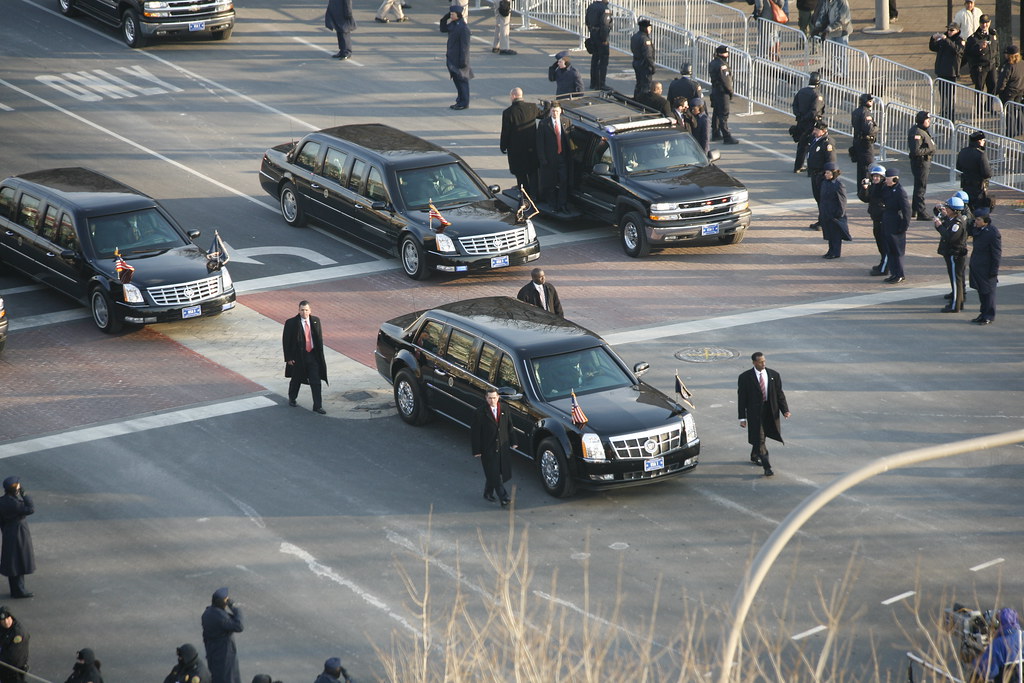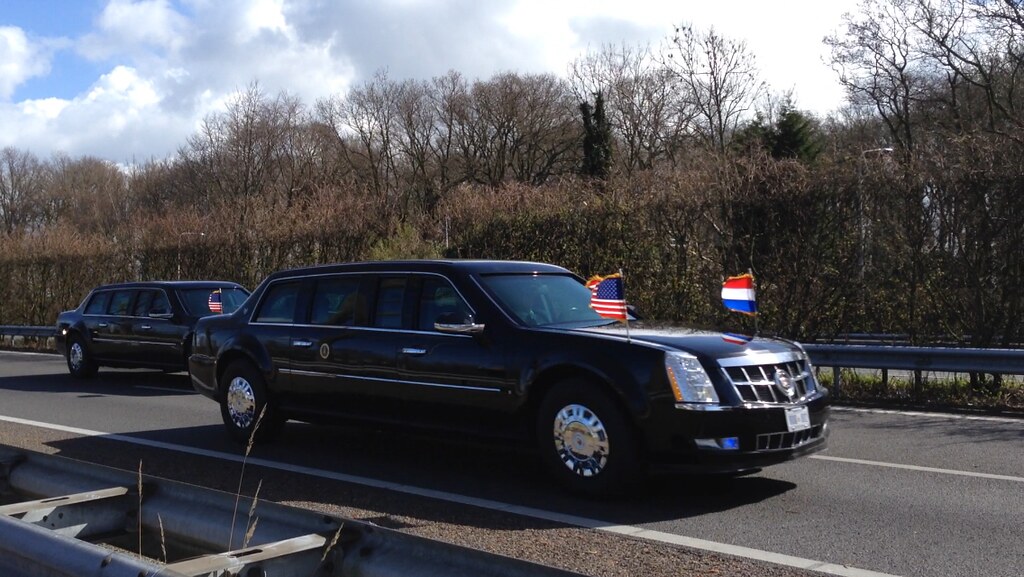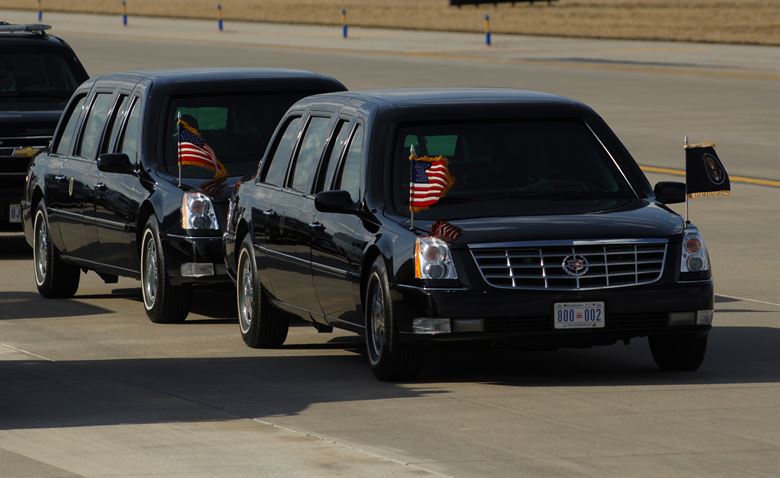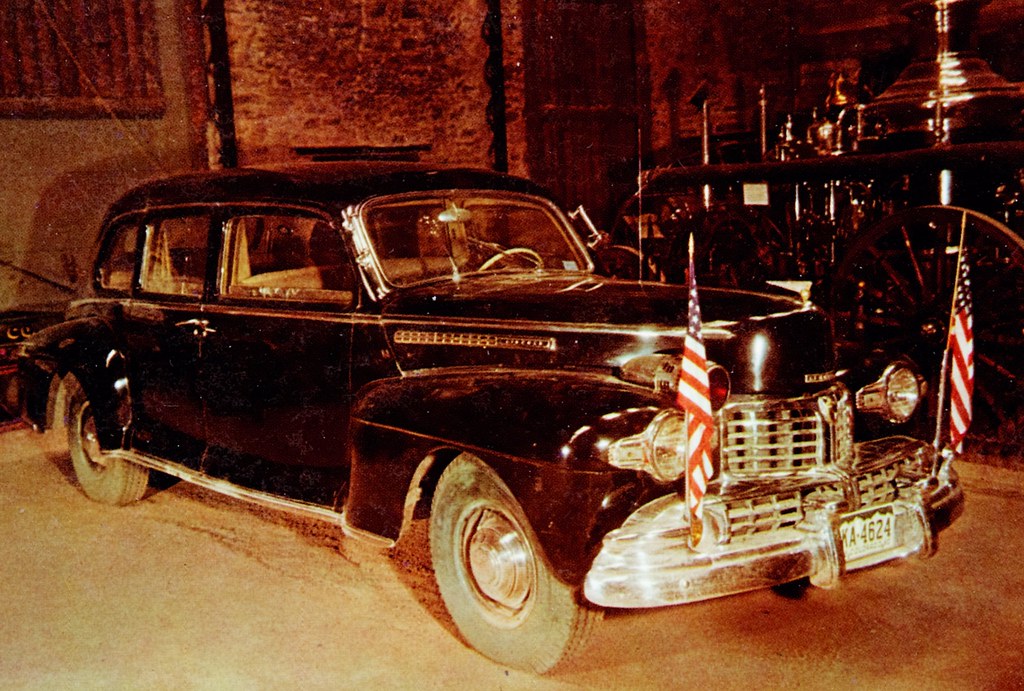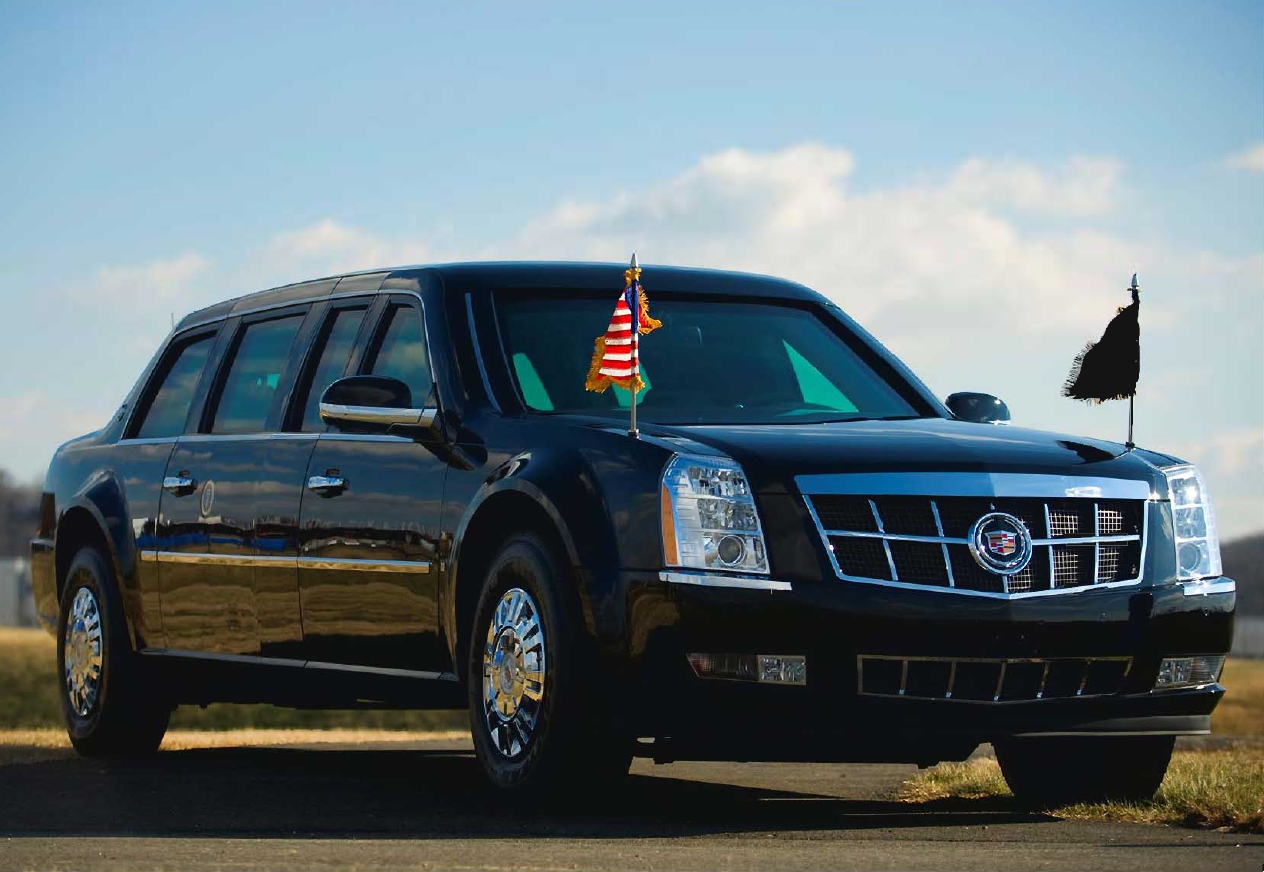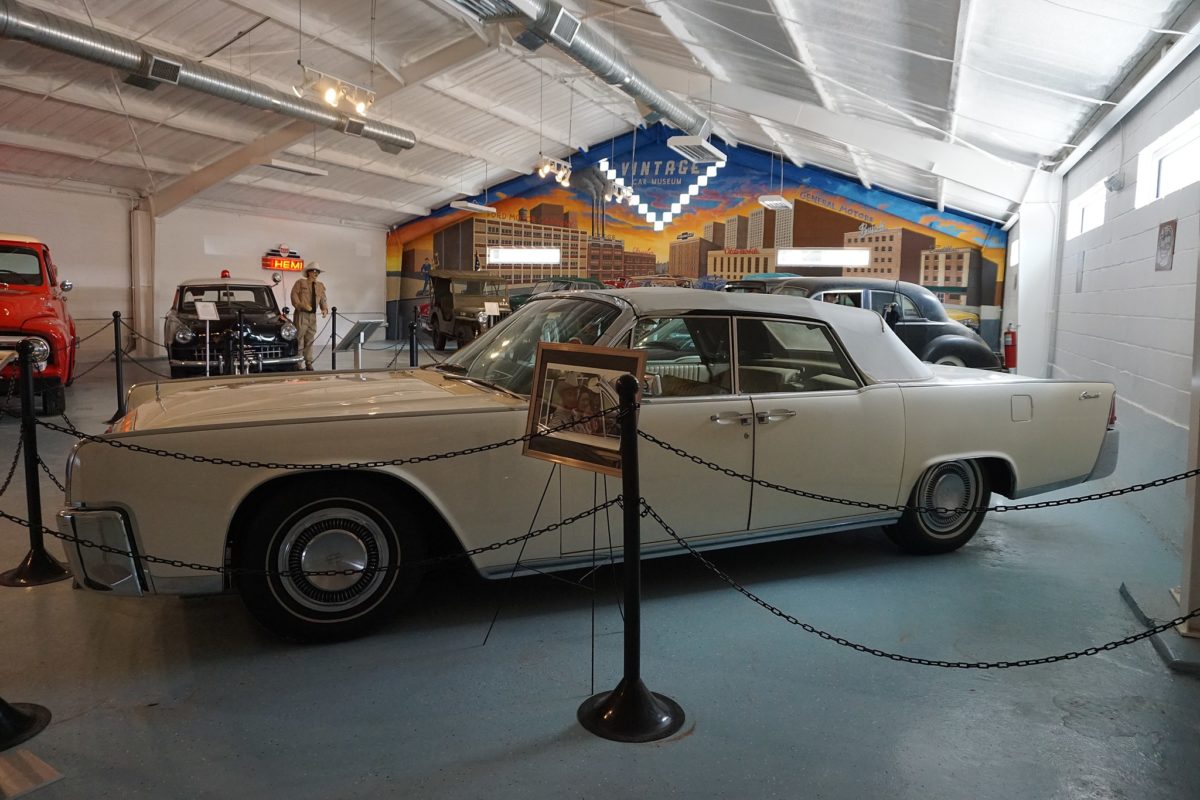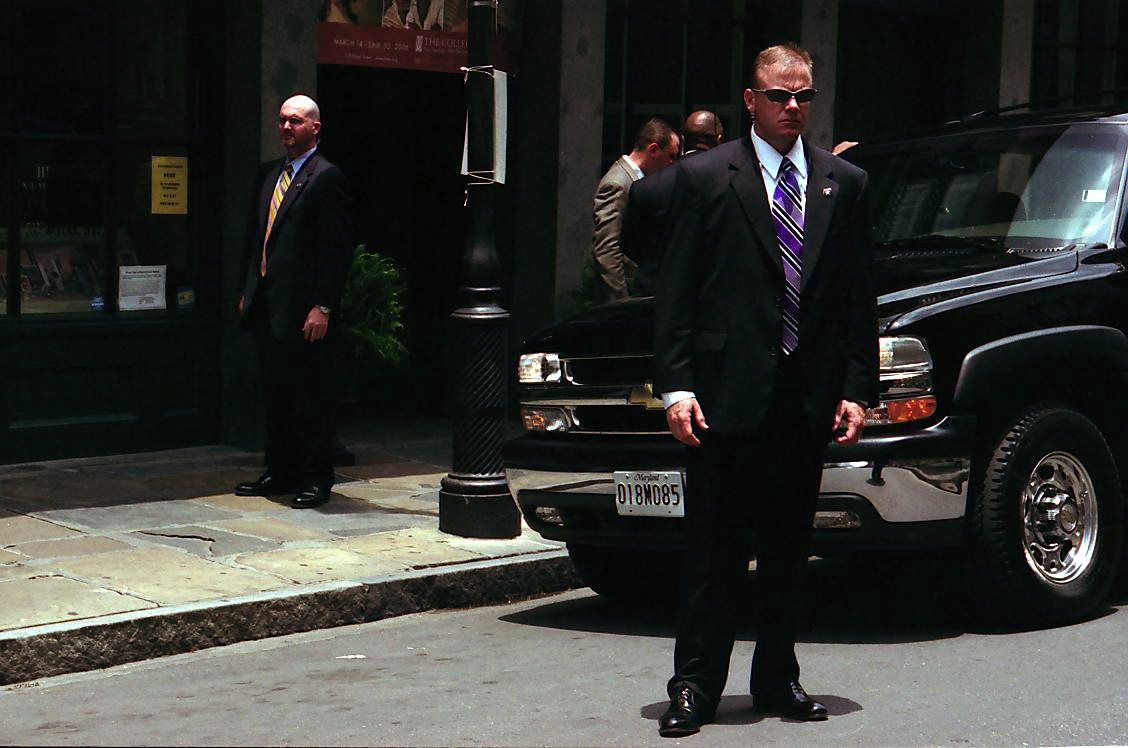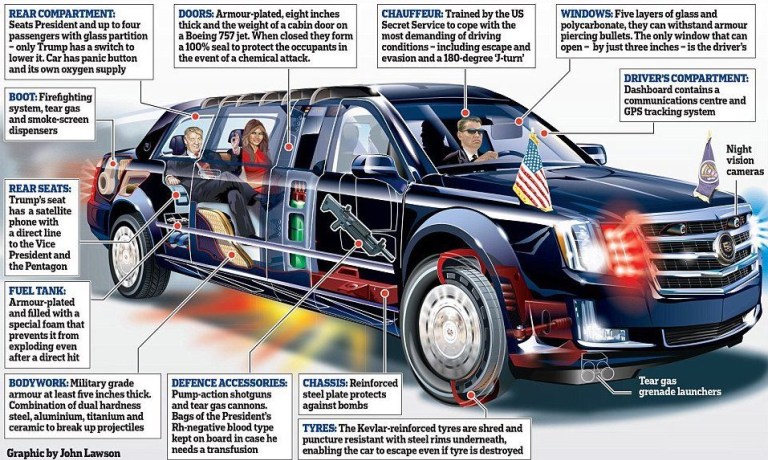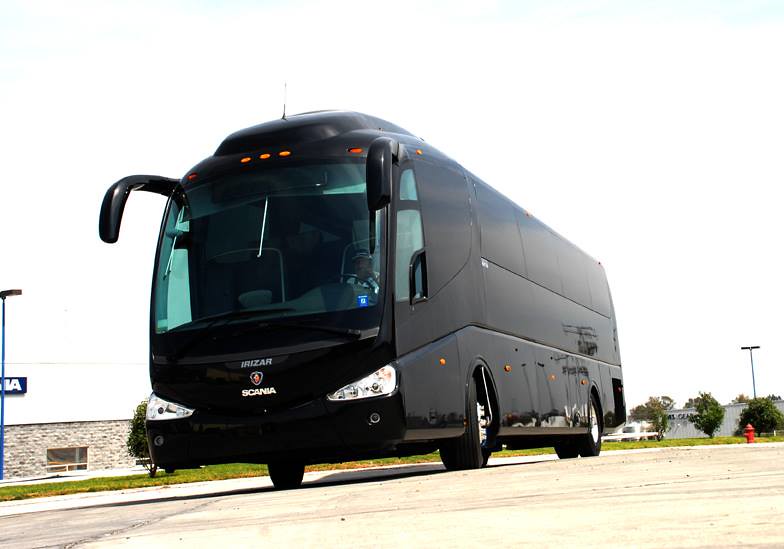The Complete History of the Presidential State Car
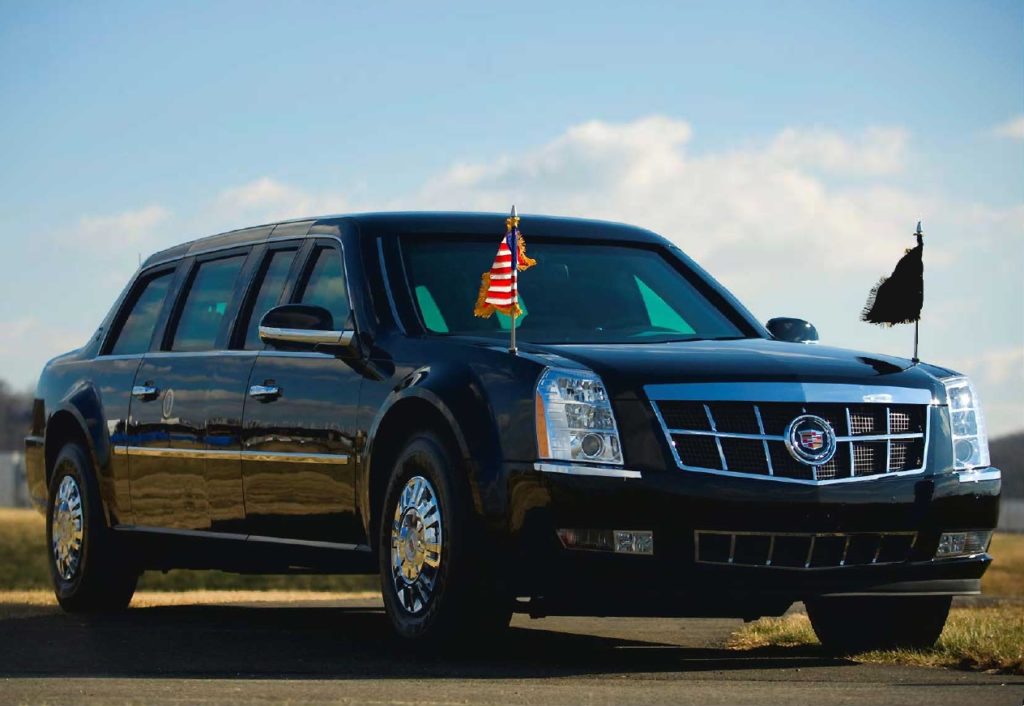
Everyone knows that the President has his own special vehicle to drive him around and that it is designed for protection and comfort. But, you will likely be surprised to learn some interesting facts about this auto throughout history.
It Is Common to Lease the Cars
Before taking a look at some of the famous state cars throughout the history of the presidential office, consider that throughout history and in modern times, it was common for the automaker to retain ownership of the vehicle. Instead of buying it outright, the White House or Secret Service would lease it, sometimes for incredibly low fees, such as $1. There are some exceptions to this rule, and times have changed, but it was generally accepted throughout history that the state cars remained the property of Ford Motor Company.
The First Was in 1901
The very first presidential state car took to the road on July 13, 1901, with William McKinley. During his term, it was a steam car from Stanley Motor Carriage. It did not last for long, however, as McKinley liked his image as a horseman who rode rough. When Theodore Roosevelt began using the presidential state car at the beginning of his term, the Secret Service bought a 1907 steam car from the White Motor Company to follow. This officially replaced the previous custom of the Secret Service following the president’s horse and buggy on foot.
The First Fleet in the 1910s
The first fleet of presidential state cars arrived under William Howard Taft’s leadership during the 1910s. He turned the stables into a garage and purchased a fleet with four cars. It included two Pierce-Arrow cars that were luxurious, a steam car from White Motor Company, and an electric car from Baker Motor Vehicle. Interestingly, Taft liked the steam portion of the steam car the most. He specifically appreciated the ability to use the steam to hide himself from the press. That vehicle cost $4,000 at the time, the equivalent of around $112,000 in 2018.
Harding’s Firsts With the State Car
Warren Harding had several firsts in regard to the presidential state car. He was the first president who also drove. He was also the first who rode a car to his inauguration. Harding’s state car was a Pierce Arrow that he was a big fan of, although he rode in a Packard Twin Six during his inaugural parade. The Republican National Committee provided Harding with this vehicle. At the time, the Washington Post noted that the decision of Harding to arrive at his inauguration in a car was likely the official death of the horse and carriage.
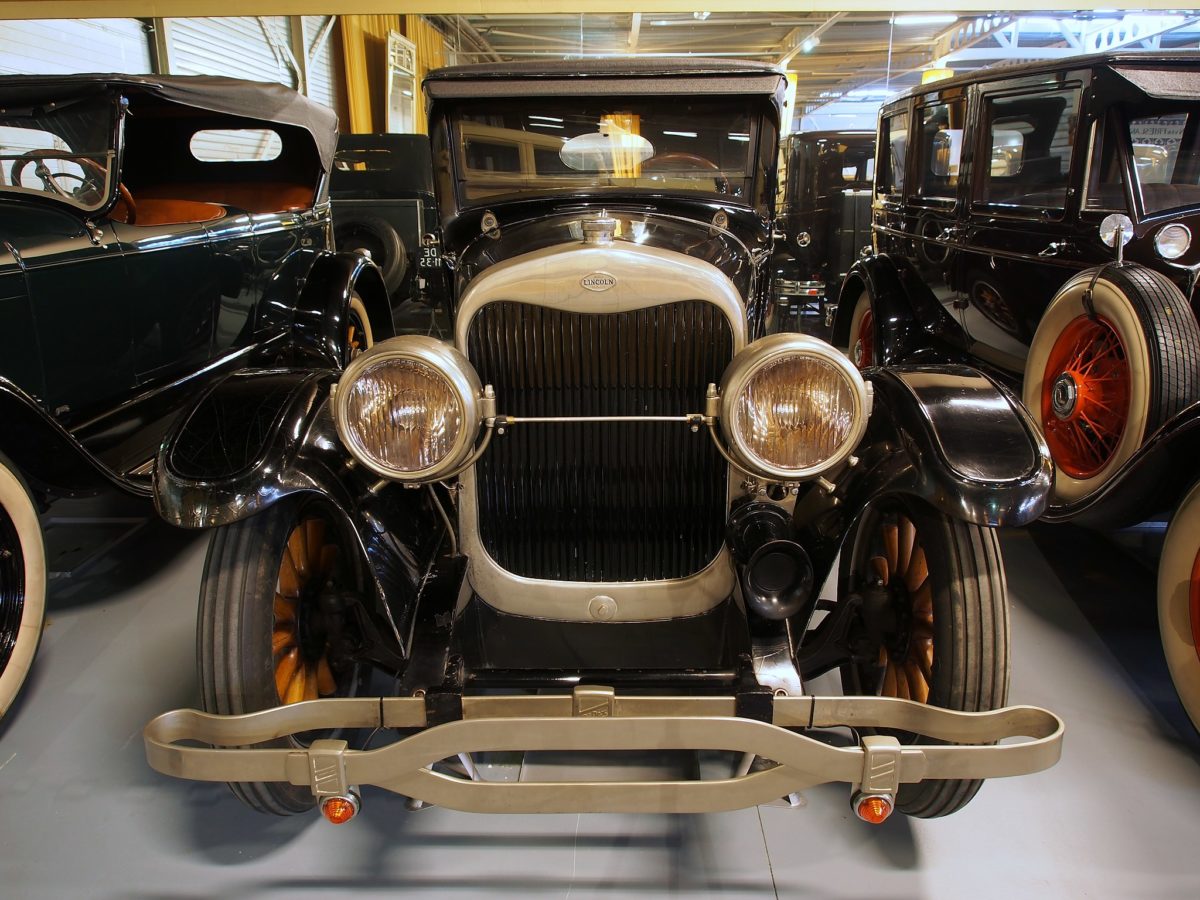
Coolidge Was Careful
Calvin Coolidge was known for being incredibly cautious in the presidential state car throughout his term. The Associated Press has reported that when around Washington, his driver was under instructions to avoid exceeding 16 miles per hour. There are also reports that Calvin Coolidge would rarely talk to the driver of his vehicle, out of concern that he could ruin the man’s concentration and cause danger. Coolidge’s term was also when the government first started using the Lincoln from the Ford Motor Company. This may have been due to Coolidge’s respect for Henry Ford.
Hoover Entered With Extra Experience
When Herbert Hoover began his term in 1929, autos were an accepted part of life. Hoover was one of the first leaders to realize the potential effect that the automobile would have on trade as well as convenience and pleasure. During his time as Secretary of Commerce in 1921, he worked hard to create traffic codes. As such, while he did not have a reputation for being overly cautious like Coolidge, Hoover made significant contributions to automotive safety. Although not necessarily related to his state car, this shows the lasting automotive effects Hoover had on the country.
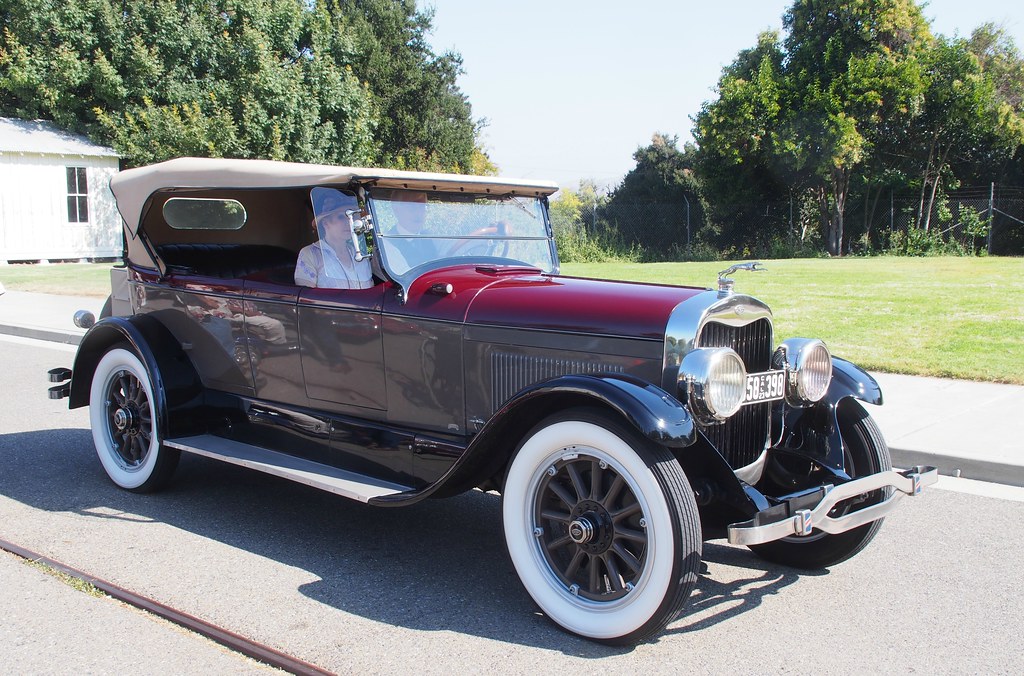
Roosevelt’s Cars Had Special Equipment
Franklin Roosevelt suffered from polio, so he was unable to operate a car with normal control. As such, his cars were customized to include hand controls. This was one of the rare customizations in the early days of presidential vehicles. Interestingly, these adjustments Roosevelt ordered in 1936 went directly against Secret Service protocols that stopped sitting presidents from driving. During most of his time in office, Roosevelt drove the Packard. There was a backup Lincoln Phaeton later, followed by the Sunshine Special, which became one of the more popular state cars.
The Sunshine Special
The Sunshine Special is the nickname of a 1939 Ford Lincoln that was used for Franklin Roosevelt and Harry Truman’s terms. The auto was massive and had a V12 engine to propel it. To give a feel of its breadth, its wheelbase spanned 160 inches. It also featured 0.50-caliber-resistant armor and inch-thick windows for protection. Ford also added self-sealing tire tubes, which were the earlier version of the run-flat tires we have today. The Sunshine Special had several firsts, including being the first auto built to the specifications of the Secret Service and the first that was leased instead of purchased.
Later Modifications to the Sunshine Special
Because the Sunshine Special was in use for many years, it underwent several modifications to remain up to the standards of the Secret Service. In 1941, the top was lowered three inches for aesthetic reasons. The 1942 adjustments had more to do with security following Pearl Harbor. This is when it got its one-inch-thick proof glass, red warning lights, a compartment for defensive measures, a radio transceiver, and inner tubes that were flat-proof and metal-clad. Those modifications increased its length by six feet and its weight up to 9,300 pounds.
The Sunshine Special Was the First to Be Airlifted
The tradition of the president taking the state car with him on his travels abroad began with the famous Sunshine Special. During Truman’s time in office, this vehicle would be airlifted as the leader traveled. Although this was the first state vehicle to be moved around in this way, it was far from the last, as this tradition continues today. At the time, the idea of airlifting the vehicle was likely unheard of, but now it is simply accepted practice. The safety of the Chief of State remains the priority.
Truman’s Switch to Lincoln
There are rumors that General Motors would not let Truman borrow his cars for his campaign in 1948, so when he entered office in 1950, he opted for Lincolns instead. The state cars included 10 Lincoln Cosmopolitans that Henney Motor Company modified. Hess and Eisenhardt enhanced them with safety features, painted them black, and added headroom to fit the tall silk hats. One of these was an armored convertible while the others were closed bodies. All of them had V8 engines with 152 horsepower. There were 10 specially built Lincolns.
Eisenhower Drove a Classic
Although it was not technically a state car, it is worth noting that Dwight Eisenhower drove a unique vehicle during his campaign in 1952. This was a 1914 Rauch and Lang vehicle that was an electric vehicle. It surprises some to learn that electric cars have been on the roads for over a century. That particular company only lasted from 1905 to 1920. The one Eisenhower used during his campaign had belonged to his parents. Now, you can find it at the Eisenhower Museum, if you visit that location in Abilene, Kansas.
The Bubble Roof
The state car got a bubble roof in 1954, which was clear. This predated the Porsche Targa, which would later popularize the bubble roof. This came from the fact that Dwight Eisenhower was not a fan of the convertible top on the 1950 Lincoln Cosmopolitan. His predecessor Harry Truman had ridden in the vehicle without any complaints. Apparently, Eisenhower’s problems with the car stemmed from the fact that attendees along a Richmond, Virginia, parade route were not able to see him. This bubble roof state car stayed in service until 1965.
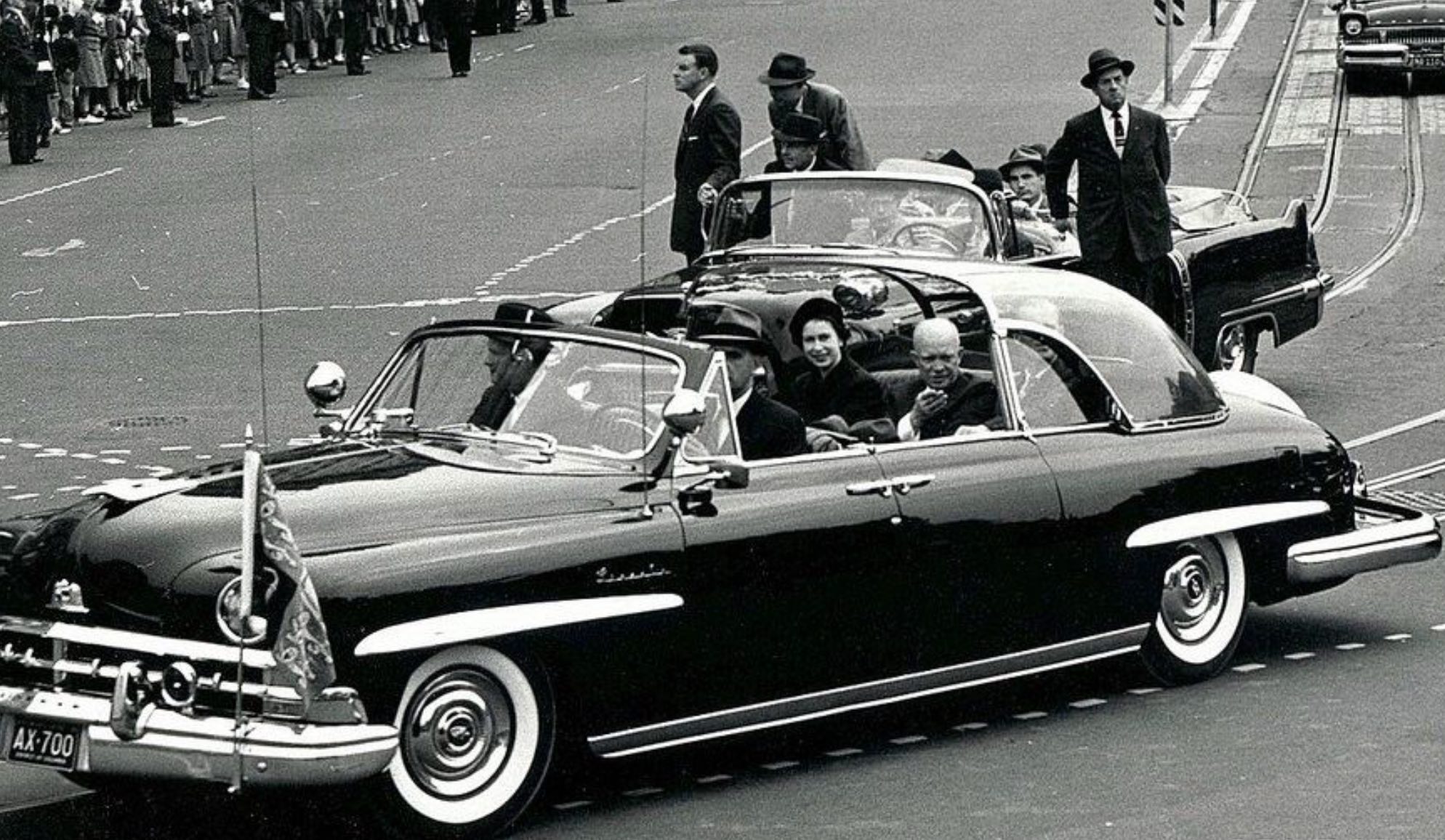
JFK’s Was the Most Sophisticated to Date
When Kennedy entered office, his 1961 Lincoln Continental with the code name X-100 was the most sophisticated of the state cars so far. It had a siren, a first aid kit, a fire extinguisher, radiotelephones, and heavy-duty air-conditioning and heating. The exterior also had enhanced retractable handles and platforms so the Secret Service agents could easily ride along. It also had three different removable roofs as well as a hydraulic lift for the rear cushion. The goal was to improve visibility of the Chief of State to appeal to the public.
The 1961 Lincoln X-100 Continental’s Late Modifications
The 1961 Lincoln X-100 Continental is perhaps the most famous of all presidential state cars throughout history, as it was the last vehicle Kennedy rode in. Following that incident, it received multiple alterations to improve presidential safety. These included multiple polycarbonate glass layers that were resistant and the addition of a fixed roof. There were also new flat-proof tires and fuel tank protections. That fixed roof was an impressive glass enclosure with 13 pieces of proof glass, all of which was at least one inch thick. At the time, this was the biggest proof glass piece that was curved to be produced.

The X-100 Continued Service
Some people may be surprised to hear that future leaders continued to use the X-100 after Kennedy’s memorably last venture in it. With such a large investment and a highly customized vehicle, however, this makes sense. The following leaders did not have superstitions either and the improvements ensured their safety. The auto did not fully retire from service until 1977. As such, it occasionally served Johnson, Nixon, followed by Ford, and finally Carter. Today, you can find it in Dearborn, Michigan, at the Henry Ford museum.
Lyndon B. Johnson’s Main State Car
The main state car during Johnson was a 1967 Lincoln Continental, following the pattern of previous state cars. Johnson would have preferred a white convertible, but the Secret Service insisted that would not follow safety or protocol. Instead, his Continental was on lease from Ford Motor Company to the federal government for $1 each year. It cost the company around $500,000 to make, which is the 2018 equivalent of around $3.76 million. This auto had 4,000 pounds of armor and a V8 engine with 340 horsepower. Amazingly, it could hit 100 mph despite its weight, or reach 50 mph with all tires flat.
Inspiration for the Vista Roof
The Ford Flex features a unique Vista Roof that turns heads and stands out. However, it was not original as that design first appeared on the 1969 Lincoln Continental that served Nixon. The only difference is that the windows on that historic model could not be opened, which was likely a safety measure. The new Vista Roof can indeed open and is now marketed as a way of brightening and adding ventilation to the interior of the vehicle. The modern version also has a one-touch feature that may not have even been possible at the time of the original inspiration on Nixon’s auto.
Presidential Redesign in 1972
The 1972 model year of the Lincoln Continental that served Nixon was redesigned, right before his reelection. The overall style remained the same, to the extent that an untrained eye may not be able to spot the difference. Changes included making the front end more square and concealing the headlights. It still remained a 22-foot limo with high-end style. It also had aftermarket features like a removable roof section so Nixon could stand during parades. It also gained 5,000 pounds via quarter-inch armor. The interior was incredibly plush, featuring quilted leather, lots of sunlight, and lap belts.
The Modified 1972 Lincoln Continental’s Important Roles
Another state car with an infamous history is the modified 1972 Lincoln Continental that arrived in the White House in 1974. It is most famous for holding Ford in 1975 during his unfavorable interaction with Sara Jane Moore and for transporting Reagan to reach the hospital in 1981 following his own unfavorable interaction with an unhappy critic. This car was 22 feet long and weighed 13,000 pounds. It also had a V8 engine, external microphones, proof glass, full armor plates, and racks to hold protection. The White House leased it from Ford Motor Company for $5,000 each year (the 2018-equivalent of $25,401).

The Unique 1983 Cadillac
As of January 1984, the leader of the free world rode around in a 1983 Cadillac Fleetwood, which was 3 inches taller and 17 inches longer than the stock version. It had distinctive styling, a large rear greenhouse, and a raised roof. It also featured proof glass and armor. Other amenities included the oversized tires and wheels, the automatic leveling system, and the heavy-duty breaks. It also had a 7.4-liter V8 engine that originally came from a Chevy heavy-duty pickup. For extra safety, there were no running boards and no sunroof.
Some Cars Feature Tailgating Accessories
Those in the know will tell you that Secret Service agents appreciate the ability to sit down. Some of the state cars actually have built-in features to incorporate this, while still offering visibility and the ability to protect the country’s leader. The 1983 Cadillac DeVille or Fleetwood used by Reagan, for example, has a back bumper that folds out so agents could sit on it. They would hold onto a retractable hand bar to remain stable. This feature may or may not fly on today’s state cars given the stricter safety requirements on autos.
Visibility and Other Adjustments on Reagan’s Cadillac
In addition to the fold-out back bumper and retractable hand bar, the Cadillac Deville or Fleetwood from Reagan’s term also featured a roof that was raised a few inches. This feature was specifically designed for public outings, as it improved the chances of the public being able to spot Reagan. Of course, the top area of the vehicle was made from proof glass. This way, the public could get a view of the leader without any risk to his safety or concerns about the actions of those who criticized his actions and policies.
Five-Foot Tall Lincoln Town Car
In 1989, the state car became a Lincoln Town Car of the same year. This model took the trend of customizing the vehicle to fit the president to extremes, with it measuring over five feet tall and 22 feet long. This vehicle began service under the first Bush as the successor to the 1983 Cadillac Fleetwood. It served throughout the entirety of the terms of Bush until it was replaced by the new version for Clinton. It is not that unique in modern times for the state cars to last this long, but it does show their extreme longevity.

Clinton’s Cadillac Fleetwood
During his terms, Clinton relied on a 1993 Cadillac Fleetwood to get around on official business. A former agent from the Secret Service, Joe Funk, told CNN a bit about the car. He mentioned the dichotomy associated with this vehicle. The outside world could not get in thanks to the proof glass and armor. At the same time, modern luxuries and technology meant that Clinton and his companions could access everything via satellite communications, phones, and the internet. Today, you can see the exterior of the car, but not the inside, at the Clinton Presidential Center, which is in Little Rock, Arkansas.
George W. Bush’s Cadillac DTS Cars
During his terms, the second Bush rode a few different Cadillac DTS autos. On January 20, 2001, he drove in one with Clinton to his inauguration. For his second inauguration, he received early access to the updated 2005 DTS, which would be available to the general public, minus the official modifications, a few years later. Like other state cars, this one was handcrafted and custom-built featuring armor and a heightened roof. Centigon custom-built this auto, which has most of its details classified due to security. It did feature emergency lights and unique looped door handles.
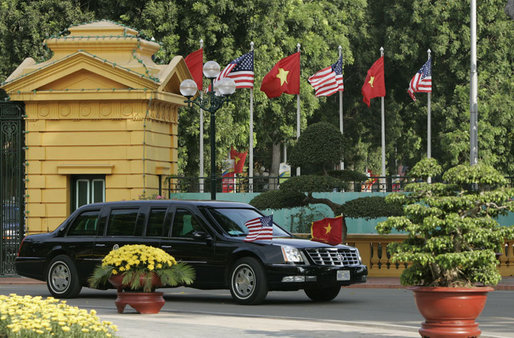
Creating a New State Car From the Ground Up
Following the inaugural vehicle in 2001, Bush was the first Chief of State in several decades to move away from Cadillacs. This was due to the inability of the company to create a vehicle that could be suitably turned into an official state limo. The previous state cars had also suffered from short-lived brakes and failing transmissions due to the numerous amenities and armor requirements from the Secret Service. Instead, a General Motors R&D arm was tasked with designing the new vehicle from the ground-up, resulting in the “Cadillac Deville” seen throughout his term.
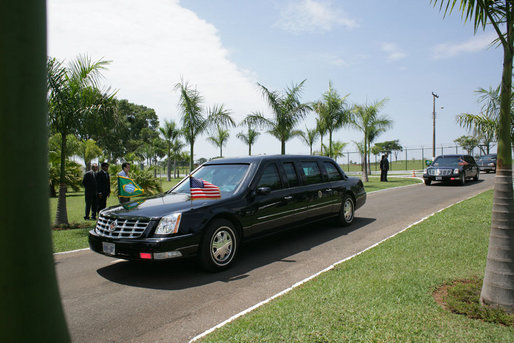
Bush’s Cadillac Deville – The First “Beast”
The vehicle created by that R&D branch was known as a Cadillac Deville. Those in the know speculate that it was based on the chassis used in GM’s full-size SUVs, like the Escalade, Yukon, and Suburban. It had bulletproof glass that actually blocked some of the light spectrum, armored doors, and rumors of run-flat tires and sealed passenger compartments with separate air supplies. It definitely featured a foldaway desktop, reclining rear seats that had adaptive and massaging cushions, and a 10-disc CD changer. This vehicle first bore the nickname of the “Beast.”
The Customized Cadillac for Obama – Some Speculation Involved
In 2009, the customized Cadillac that would serve as a state car until 2018 entered service during Barack Obama’s inauguration. This was a fully customized auto that was not based on a single model. It borrowed some elements from other Cadillacs and had some unique features. It did have the recognizable large Cadillac badge and familiar taillights and headlights. Some of the basic features of the auto were never revealed. Experts speculate that it may use the GMC Topkick platform with a Vortec 8.1-liter V8 or a Duramax diesel 8.1-liter V8.
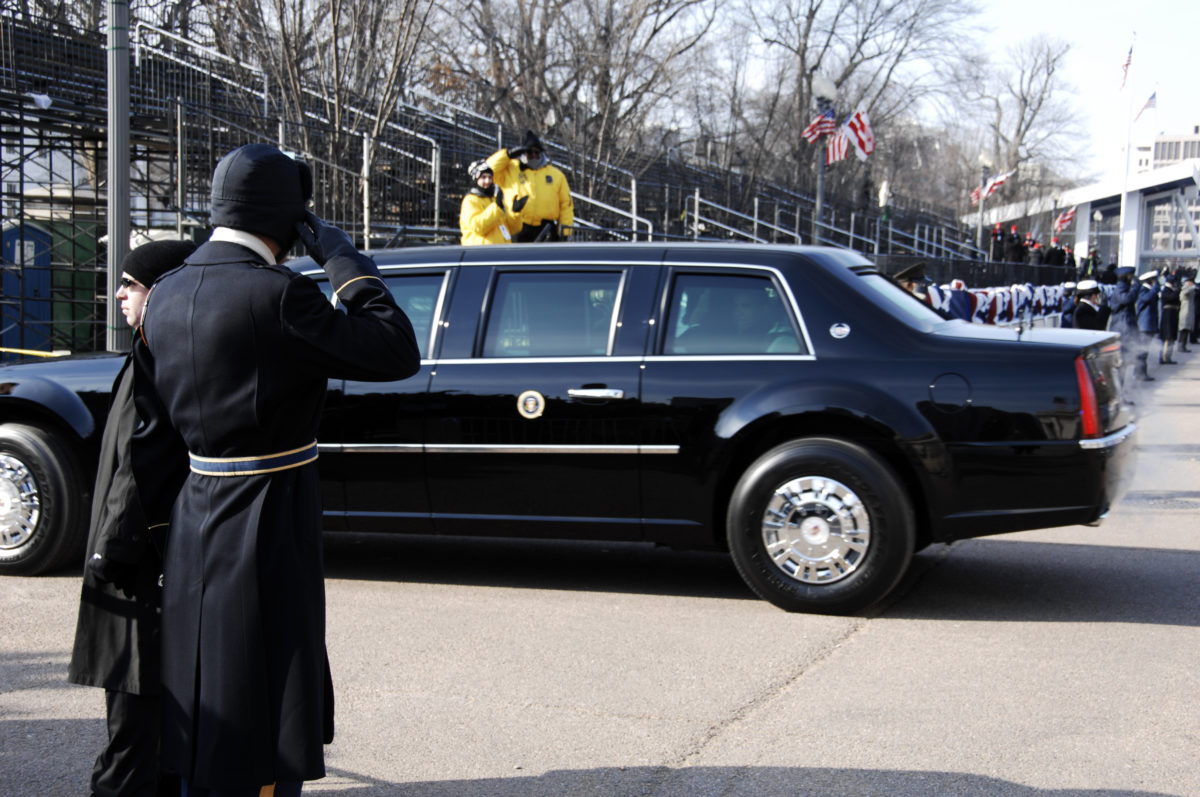
The Customized Cadillac – What We Know
Reportedly, this limo cost $300,000 to $1.5 million and could only get up to 60 mph. We know that there were no keyholes on the doors and only the Secret Service know how to open passenger doors. There was also even more five-inch bulletproof glass than previous state cars. The interior was completely sealed for protection and there were run-flat tires. Other known features include an armored and foam-filled fuel tank, oxygen tanks, night vision optics, and various protective and offensive gear. It also had the high-end details of other Cadillacs, including hand-cut-and-sewn interiors.
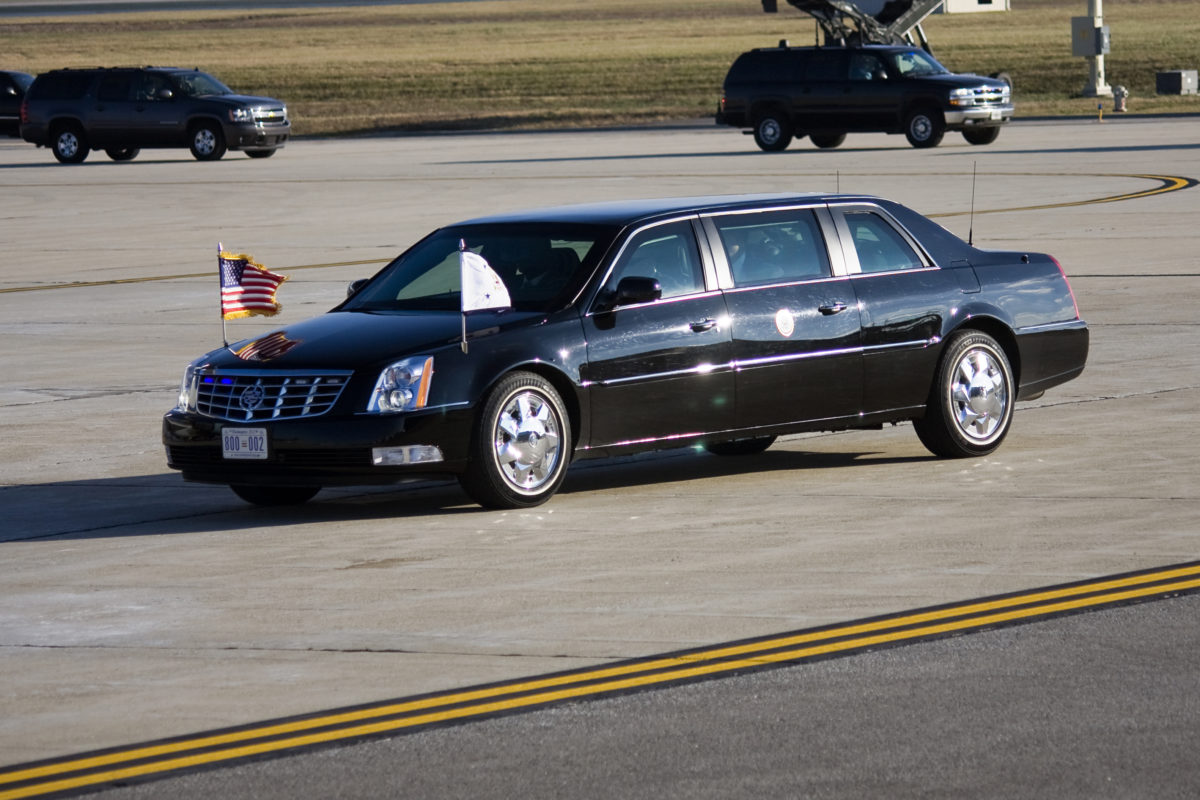
The Windows Do Not Open
Those riding around in the presidential state car must rely on climate control and will never feel the breeze in their hair as they drive around. That is because the windows of the vehicle do not open at all. The only exception to this is the driver’s window, which can open just three inches. There are two reasons for this. One, given that the glass on the Beast is five inches thick, it would be hard to engineer a vehicle that lets them open, especially given the solid nature of the doors. Additionally, it is a strong safety measure.
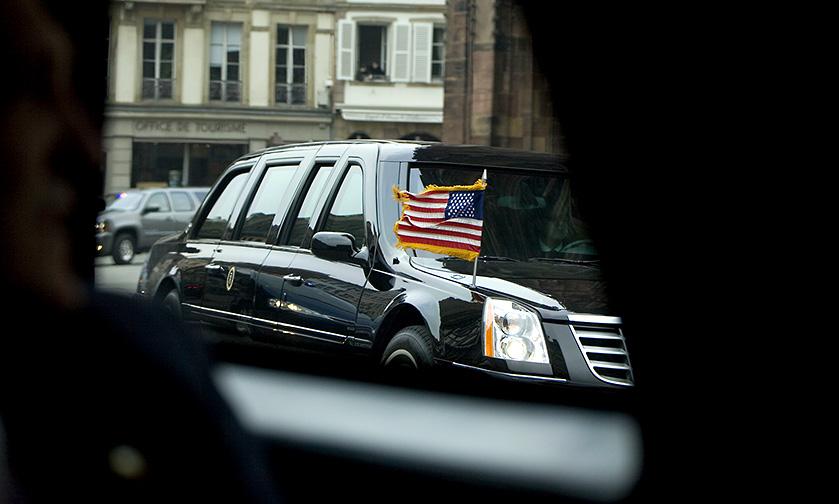
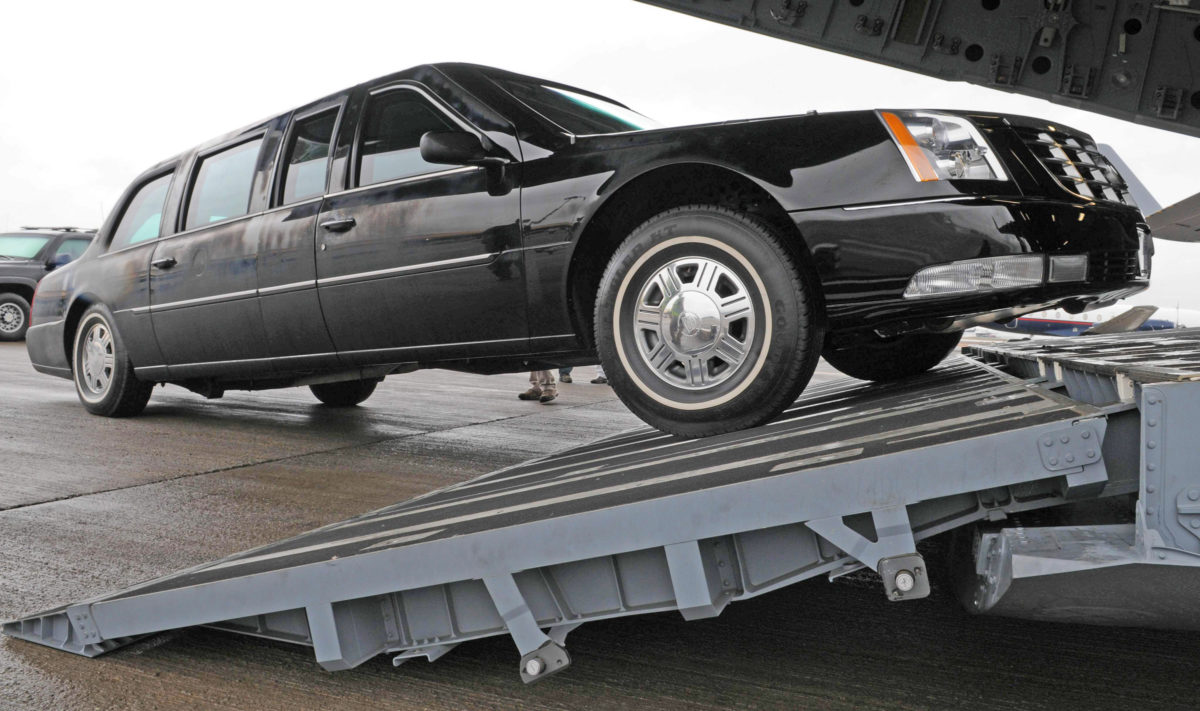
The Beast Is Ready for Anything
The Secret Service equipped the Beast so that it could handle any foreseeable scenario. In the case of a blowout on the tires, the steel rims are designed to ensure the vehicle continues to move with ease. Even if the fuel tank gets hit with something, the foam sealing prevents any negative outcomes. The trunk features not only a first aid kit, but also vials containing the president’s blood type, firefighting equipment, and oxygen. This way, the leader never needs to wait for medical attention, regardless of the situation. There is also extensive offensive and defensive gear.
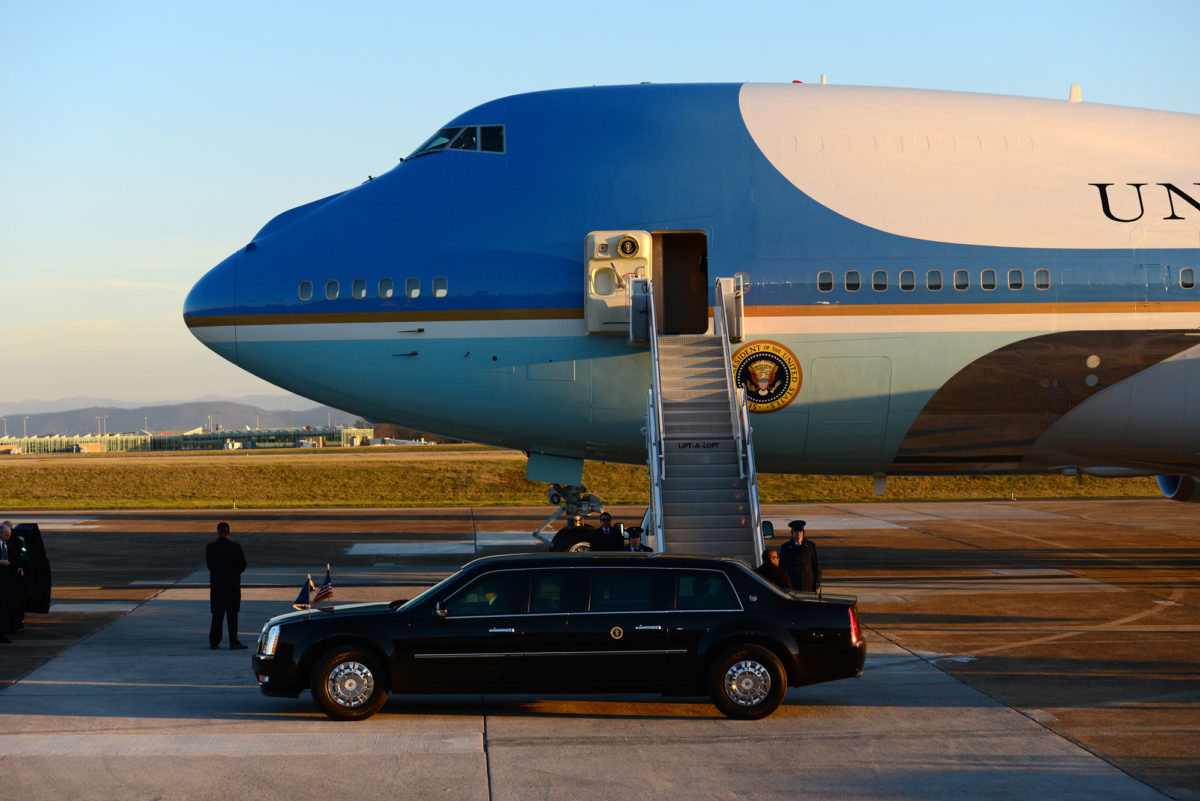
An Abundance of Kevlar
Kevlar is known for its ability to resist projectiles, so there is no surprise that it is used in ample quantities in the state car. You may not realize, however, just how much Kevlar can be included in a vehicle. On the underbelly of the vehicle, there is a Kevlar mat to prevent damage from objects on the road or tossed under the auto. The tires also feature Kevlar, a move which helps with accidental and purposeful punctures, by limiting the possibility of a puncture. If a puncture does occur, it reduces the risk of the tires going flat.
There Is a Panic Button
No details are known about this feature, but we do know that the state car contains a panic button. No one knows what situations this button is designed for or what protocols go into action when it is pressed. There is not even general knowledge of how many panic buttons there are. The assumption would be that there are at least two, given that the passenger compartment is completely sealed and the driver may have a need to press the button. Only those who need to know, namely the Chief of State and Secret Service, know where the button is, when it should be pressed, and what happens after.
Gas Mileage Is Horrible
It should come as no surprise that the presidential state car gets absolutely horrible gas mileage. This vehicle is incredibly heavy thanks to its use of armor, thick windows and doors, and other unique contributions. It is already based on a heavy vehicle, but those additions, plus the extra length it has compared to the average vehicle, make it even heavier. Factor in the fact that you need a powerful engine to get that weight moving and the state car gets very poor gas mileage. The Beast used during Obama’s terms got around six miles per gallon.
It Has Broken Down
Although every single measure is taken to ensure that the state car never breaks down or leaves the leader stranded, no one is perfect and neither is any vehicle. In 2011, the state car famously broke down. Worst of all, this happened in Israel, not in the United States. Reports from the time indicate that the driver accidentally used the wrong fuel. No one knows whether this is true. It does, however, show one of the many reasons why the state car always travels with a mechanic in the motorcade. It also briefly broke down in 2013 after hitting a curb in Ireland.
There Are Several
Estimates indicated that the previous incarnation of the state car, the one used during Obama’s terms, had around 12 copies in total. This adds up to quite a sum of money, but it also makes logical sense. This way, if something happens to one of the vehicles or it needs some routine maintenance, a backup is available. Of course, the extra version of the Limo One is less useful when breakdowns occur in Ireland or Israel than when they happen in Washington, D.C., where those additional versions likely are located.
Provocative License Plates in 2013
In 2013, the state car received unique license plates that some likely viewed as provocative. They were the standard plates for Washington, D.C. and featured the words “Taxation without Representation.” This references the lack of reputation of the district in Congress. The change to these license plates was the result of the D.C. city council petitioning the Chief of State to use these plates. That council wanted the millions who watched Obama arrive at his second inauguration to see the plates, a goal which they achieved. Prior to this, the auto had used unique plates.
Who Drives the State Car
The state car is only driven by the Secret Service. All drivers who get behind the wheel are highly trained and they need to be able to use the most adept police-style evasion techniques. That is challenging enough in an average-sized vehicle but remember that presidential cars easily weigh several times as much as the typical auto. All Secret Service drivers must pass extensive training on a secluded site that is likely a military base. During this training, they receive input from test drivers as well as GM engineers familiar with the auto’s inner workings.
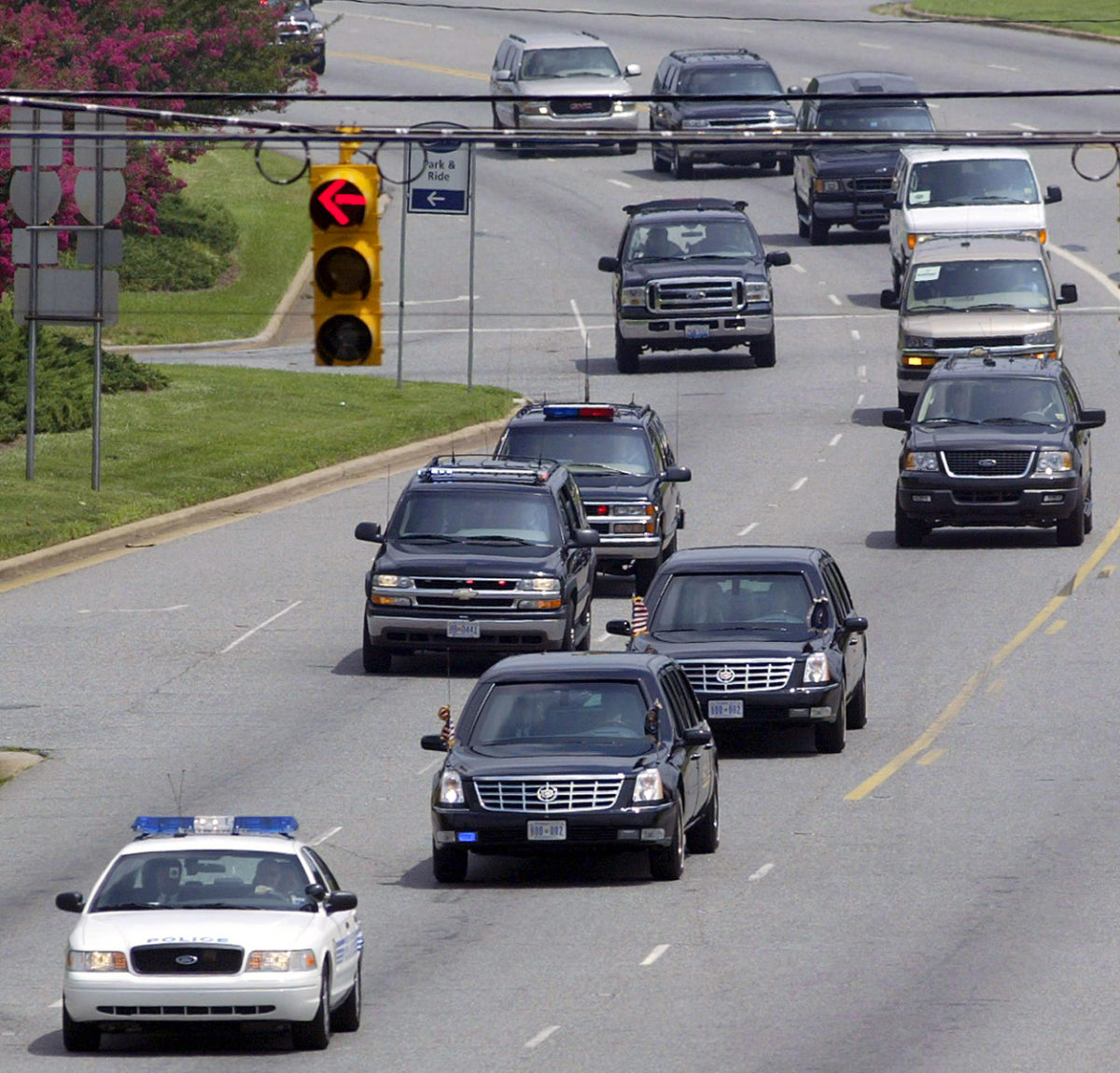
The Chief Security Officer Is Always Present
Any time that the Chief of State is on the road in the state car, he will not be alone with the driver. The Chief Security Officer is always present in the front passenger seat of the vehicle, next to the driver. This ensures that the person with the prime responsibility for keeping the leader safe can always keep a close eye on him. This is just one of the many pieces of evidence that show how the two are always in very close proximity. Of course, the Chief of State may be alone in the passenger compartment.
Most State Cars Do Not Go Up for Sale
Historically, it was common for presidents to buy their state cars from the government at the end of their terms, although this did not always happen. Woodrow Wilson bought one of the Pierce-Arrow cars used by his administration from the government for $3,000 (the equivalent of $42,140 in 2018). Some of the state cars have also been for sale throughout the year. In modern years, however, this is almost never possible. Instead, it is more common for retired state cars to be fully destroyed. This is a security step on the part of the government due to the intense strength of the cars.
Destroying the State Cars
The destruction of modern state cars is complete in every way. The Secret Service participates and uses it as an opportunity to confirm the durability of the vehicle against a range of modern, available offensive weapons. The Secret Service is already well-aware of this ability but uses it as a chance to confirm that for the public and others. Additionally, the thoroughness of destruction of the vehicle helps maintain secrecy surrounding its exact features, including defensive abilities and armoring. If this information were available, it could be used to create targeted offensive moves.

The Accidental Purchase of Johnson’s Car
This policy of destroying or not selling state cars has not always been in place. A few years ago, John Lawlor, who was an advisor for “Car Talk” on NPR bought a 1965 Lincoln Continental. He made the purchase due to its condition and its status as a classic car. After buying it, he discovered that there was a White House phone inside. This told Lawlor that it was Lyndon B. Johnson’s car, based on his automotive knowledge. The most recent records indicate that Lawlor has it garaged in Middleborough and the auto is worth over $100,000.
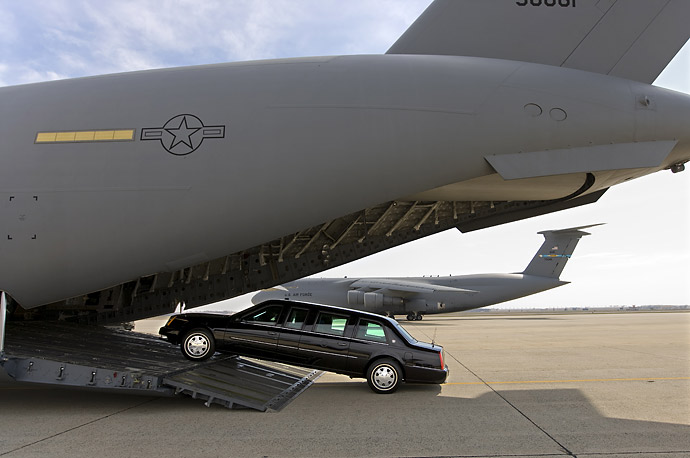 The Vehicle Travels Abroad
The Vehicle Travels Abroad
The goal behind the presidential state car is to ensure that the leader always remains safe. As such, the vehicle will travel with the Chief of State wherever he goes. Some past leaders, including George W. Bush, would occasionally use a military asset or embassy motor pool car for transportation at the destination. These would be present at the destination and eliminate the need to transport the car. However, the Chief of State only travels in American governmental vehicles. This includes bringing the state car abroad for all travel and using it while there. When it is used abroad, the car has the flag of both the United States and the country it is visiting.
Who Is in the Motorcades
The motorcades involving the Chief of State and the state car feature more than just the state car itself. These are highly detailed operations including dozens of cars. Those under George W. Bush featured as many as 24 cars while the motorcades under Barack Obama featured 30 to 45 other autos. Some of these were police cars for clearing the streets and the rest were high-end SUVs. These held the Secret Service, key staff, electronic countermeasures, White House Communications Agency employees, a counter-assault team, and personnel to mitigate hazardous materials. The motorcade also included ambulances and press vans.
Secret Service Provides Maintenance
All maintenance for the presidential state car is completed by the Secret Service as a security measure. This likely serves multiple purposes. By only having trusted Secret Service members complete vehicle maintenance, there is no risk of a person with malicious intent causing intentional damage to the vehicle or putting the Chief of State and his staff at risk. Additionally, keeping maintenance within the Secret Service limits the number of people who are able to view the vehicle. Given the high level of security associated with the state cars, and their complete destruction upon retirement, it is clear that officials do not want it inspected by outsiders.
There Are Many Nicknames
Throughout the years, the presidential state car has had various nicknames. While many of these are likely not public knowledge, some of them are. It is most commonly called “The Beast” in conversation due to the vast size of the modern state car. It is also known as the “First Car,” following the trend of things like “First Lady” and “First Child.” Other nicknames include “Stagecoach” and “Cadillac One.” Some of those nicknames are more of a mouthful than others and some, like the Beast, are more common in media.
The State Car Can Be a Decoy
Protecting the leader of the free world involves a great deal of secrecy and some misleading actions. As such, the state car sometimes serves as a decoy. Instead of riding around in this vehicle, the Chief of State may be riding in the armored bus, Ground Force One. This further prevents the potential for attacks since those with malicious intent would not know where the leader even is. While some see this as a waste of fuel, given the gas-guzzling nature of the state car, it is an important safety measure.
Ground Force One Supplements the State Car
In addition to the state car, there is also Ground Force One, the code name for the armored black buses. These buses transport the Chief of State as well as other dignitaries. Ground Force One was introduced in August 2011. Prior to this, rented buses were part of the motorcade and had retrofitted communications if necessary. Interestingly, the original Ground Force One vehicles were first used by Obama during his campaign. Given his positive experience and faith in these vehicles, it was natural to make them an official mode of transport.
The Ground Force One Vehicles
The Ground Force One vehicle has a new shell created by Prevost Car, a Quebec-based specialist. It bears the name X3-45 VIP and has three axles. From there, Nashville’s Hemphill Brothers Coach Company outfitted the coach. This resulted in police-style flashing lights on both the front and rear and 505 square feet inside. The Secret Service finished the outfitting with specialized equipment, including secure communications. The Obama administration leased two of these coaches from Hemphill Brothers. They cost $1.1 million each. Mitt Romney had also used one during the campaign against Obama, with that bus becoming a backup for dignitaries.
